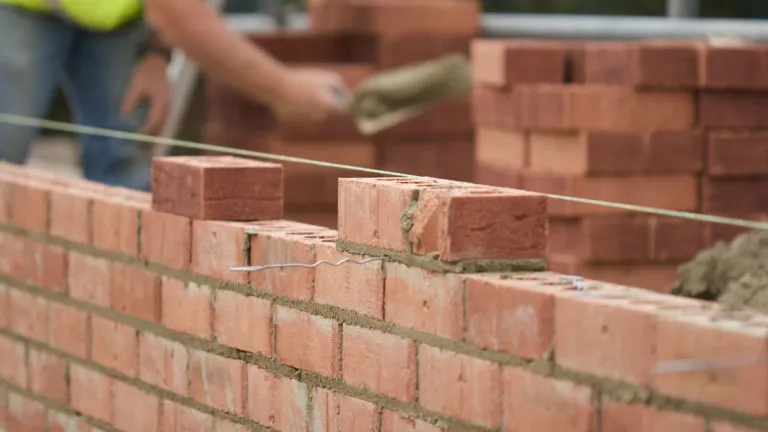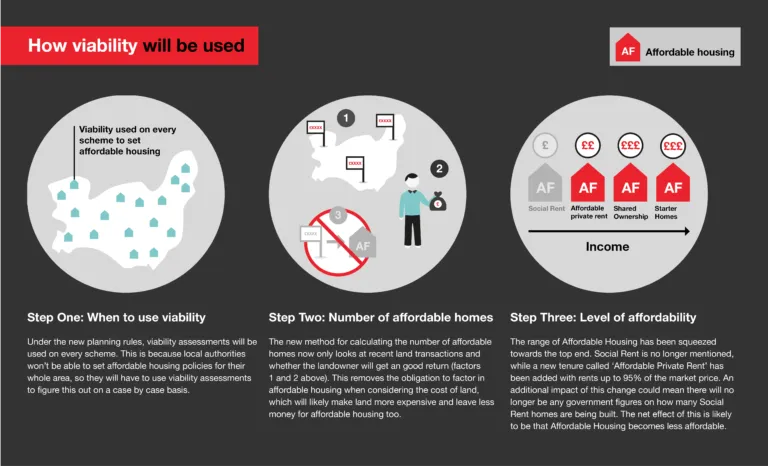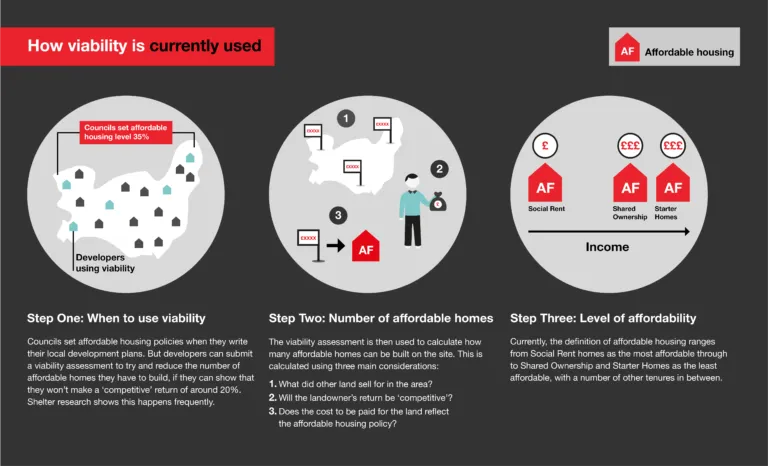Housebuilding changes could mean fewer, not more, affordable homes
Published: by Louie Freeman

In March this year, Prime Minister Theresa May delivered a major housing speech as the government published its draft proposals on changing the National Planning Policy Framework (NPPF) – the set of rules which guide how homes are built.
Our analysis concludes that despite the government’s intentions, parts of the proposals risk resulting in fewer affordable homes being built.
This is because an affordable housing loophole, known as a ‘viability assessment‘, could become both more common and more powerful in reducing affordable housing. The definition of affordable housing could also be watered down significantly, meaning that what official ‘affordable’ homes do get delivered will likely be less affordable.
How the 2018 NPPF could mean fewer affordable homes
In 2016/17, only 217,350 new homes were supplied in England, of which only 41,530 were affordable. Along with cuts to grant and financial restrictions on councils, part of the reason for this is that since 2012, national planning rules have permitted the use and abuse of viability assessments.
The government has attempted to fix this problem by simplifying and streamlining rules relating to viability assessments in its draft changes to the NPPF. However, we’re concerned these changes might risk delivering fewer affordable homes by boosting the powers of viability assessments at the beginning, middle and end of the process:
1. the use of viability assessments could increase if these changes go through. Currently, councils set affordable housing policies when they write their local development plans. Under the new planning rules, local authorities won’t be able to set affordable housing policies for their whole area, so they’ll have to use viability assessments to deliver affordable houses on a case by case basis.
To add insult to injury, developers will likely have stronger powers to go back to the council after they’ve already started building and reduce affordable housing even further.
2. the ability of viability assessments to reduce affordable housing is likely to increase. Currently, viability assessments are used to calculate how many affordable homes can be built on a site using three main considerations: (1) What did other land sell for in the area? (2) Will the landowner’s return be ‘competitive’? (3) Does the cost to be paid for the land reflect the affordable housing policy?
The new proposed method for calculating the number of affordable homes only looks at recent land transactions, and whether the landowner will get a good return (factors 1 and 2 above). The guidance would effectively remove the obligation to consider affordable housing when considering land cost, which would likely raise the cost of land and reduce the money left over to spend on affordable housing
3. the definition of ‘affordable housing’ has been diluted, which means the homes coming out of the viability system are less likely to be genuinely affordable. At the moment, the definition of affordable housing ranges from Social Rent as the most affordable through to Shared Ownership and Starter Homes as the least affordable, with a number of other tenures in between
But the new definition includes Affordable Private Rent homes, where tenants could be charged up to 95% of the market rental price, whilst Social Rent homes (the really affordable ones) are no longer mentioned. This doesn’t necessarily stop developers from building Social Rent homes, but would make it easier for them to build homes which are officially ‘affordable’, that local people actually can’t afford.
How affordable housing viability assessments are currently used
How the viability assessments will be used
What has to change
Instead of increasing the use of viability assessments, the government should amend the NPPF to fully close this loophole at all three stages:
1. l****ocal authorities must be allowed to set affordable housing policies, instead of using viability assessments on every scheme. Scheme-by-scheme viability assessments should therefore only decide affordable housing levels in exceptional circumstances. This will give everyone more certainty over how much affordable housing should be built
2. affordable housing should not be treated as the most flexible factor in the bargaining over how much to pay for land. This creates a slow process which inflates land values and leads to fewer affordable homes. Instead, we need clear limits to landowners’ share of the returns from new housing, which would add certainty for the developer and the landowners and ensure there is money left over to build affordable homes
3. S****ocial Rent homes should be retained in the definition of affordable housing. Otherwise, we simply won’t get the truly affordable homes needed to tackle homelessness
Developers and landowners playing by these new rules will still be able to make good returns, while providing their share of the affordable homes the country desperately needs.

